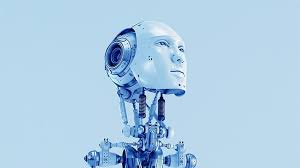
AI in Public Transport: Creating More Accessible and Efficient Systems
The integration of Artificial Intelligence (AI) in public transport is transforming how cities manage their transportation systems. Leveraging AI enables the development of intelligent infrastructure, automated service planning, and seamless passenger experiences. From predicting peak travel times to customizing routes and schedules, AI in transportation offers a strategic edge in making public systems both efficient and accessible to all users.
Enhancing Accessibility in Public Transport
For a transportation system to be truly effective, accessibility must be a priority. AI in transportation can make public transit more inclusive by addressing diverse needs and eliminating barriers for individuals with disabilities, seniors, and those who require additional assistance.
- Real-time Information for Travelers with Disabilities: AI-powered applications can offer real-time notifications about accessible transit options, elevators, ramps, and available seating. For instance, machine learning algorithms that assess the number of available accessible spaces help direct passengers to suitable carriages or buses.
- Speech Recognition for Contactless Interaction: Public transportation facilities equipped with AI-driven voice recognition allow individuals with limited mobility to interact with kiosks, ticketing machines, and information displays hands-free, reducing physical challenges when accessing transit.
- Optimizing Routes and Wait Times for Seniors: Many seniors depend on public transit but may have difficulty with extended wait times or unfamiliar routes. AI-powered systems can track passenger flows and adjust routes and frequencies to minimize waiting times, ensuring that public transit remains a viable option for older adults.
Increasing Efficiency in Transportation Systems
AI in transportation boosts efficiency by reducing operational costs, minimizing traffic congestion, and improving the experience for passengers.
- Predictive Analytics for Demand Management: AI can analyze data to anticipate peaks in passenger traffic, adjust service levels, and deploy additional vehicles as necessary. Machine learning models assess historical data, local events, and real-time patterns to predict surges in demand, making transportation scheduling proactive rather than reactive.
- Automated Route Optimization: Dynamic route optimization allows public transportation authorities to adjust routes according to changing conditions. For example, if there is an accident on a major route, AI can reroute vehicles to ensure passengers reach their destinations with minimal delays.
- Fleet Maintenance and Management: AI-powered predictive maintenance tracks and analyzes vehicle health to prevent breakdowns and reduce repair costs. Sensors and IoT devices monitor various mechanical and electrical components of buses, trains, and trams, identifying potential failures before they disrupt service.
Data-Driven Improvements in Passenger Experience
- Enhanced Trip Planning and Real-Time Updates: AI in transportation offers passengers personalized suggestions for the best routes, estimated travel times, and real-time updates on delays or disruptions. By integrating AI-powered mobile apps, passengers receive instant notifications about transit status, helping them plan trips more effectively.
- AI Chatbots for 24/7 Customer Support: AI-driven chatbots can address common questions, suggest alternative routes, and offer assistance in multiple languages, making public transportation more accessible to both local and international travelers.
- Personalized Experiences and Loyalty Programs: AI-driven data analysis can identify patterns in passenger preferences, enabling public transit agencies to personalize their services. For example, frequent riders can receive notifications about loyalty programs, incentives, or fare discounts for using eco-friendly transportation options.
Improving Safety and Security in Public Transport
AI enhances public transportation safety by proactively addressing risks, both in terms of operational hazards and security threats.
- Surveillance and Incident Detection: AI-powered cameras can detect unusual activity or potential security threats in real-time, alerting authorities to possible incidents. Facial recognition and behavioral analysis assist in identifying threats, ensuring a safer experience for passengers and staff alike.
- Autonomous and Semi-Autonomous Vehicles: AI-powered autonomous vehicles are increasingly entering the public transit sector, offering improved safety through technology that minimizes human error. Autonomous buses and trains also use machine learning algorithms to adjust their speeds according to surrounding conditions, ensuring safer operations.
- Emergency Response Automation: In case of emergency situations, AI-driven systems can coordinate evacuation protocols, alert emergency responders, and provide live instructions to passengers. This real-time intervention reduces reaction times and supports smoother crisis management.
Environmental Impact of AI in Public Transportation
AI can play a critical role in reducing the environmental footprint of public transportation by enabling more efficient energy usage and encouraging greener alternatives.
- Energy-Efficient Scheduling and Route Management: By using predictive analytics, AI ensures that transportation resources are deployed optimally, reducing fuel consumption and energy costs. For electric and hybrid public transit fleets, AI determines optimal charging schedules, contributing to lower emissions.
- Traffic Flow Optimization for Emission Reduction: AI-driven systems help manage traffic flow, minimizing idle times and reducing overall emissions. When fewer buses or trains sit in traffic, it reduces fuel consumption and harmful emissions, supporting sustainable urban development.
- Encouraging Public Transit Usage Through Convenience: By making public transit a more attractive option through AI-driven convenience, cities can reduce the reliance on personal vehicles, leading to lower carbon emissions. Passenger-friendly features such as on-demand shuttle services, personalized schedules, and real-time updates create a more appealing alternative to driving, supporting sustainable urban mobility.
The Future of AI in Public Transport
As cities continue to grow, integrating AI in transportation will be essential to manage the increased demand on public transit infrastructure. Advancements in AI, including machine learning and deep learning, will enhance data processing, predictive analytics, and automation capabilities, making future transportation systems smarter and more resilient.
To fully realize AI’s potential, collaborations among technology companies, city planners, and government agencies will be essential. By focusing on ethical, user-centered AI design, cities can ensure public transportation systems evolve in ways that are inclusive, efficient, and beneficial to the environment.
In conclusion, AI in transportation is more than a technological enhancement; it is a means to create more accessible, efficient, and sustainable public transit systems.





Leave Your Comment